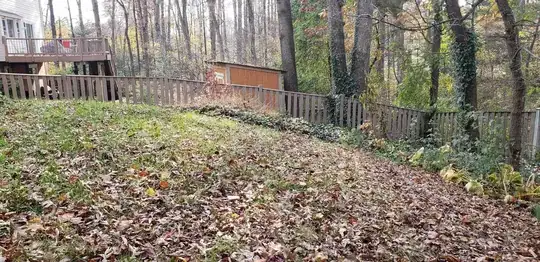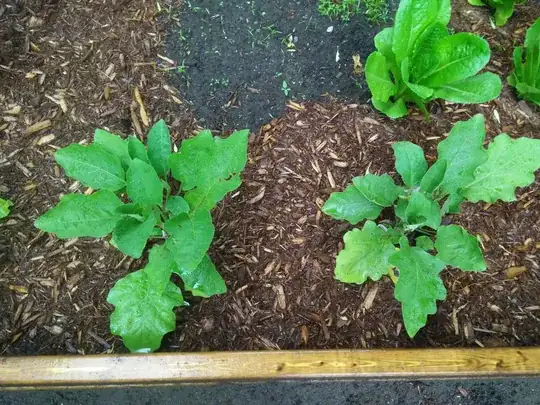Problem
Anyone on the East Coast of the US is probably aware of what a rainy year it has been. As of my writing this, the last six months in Northern Virginia have had more rain (1149mm at Dulles Airport) than the yearly average (1021 mm).
This year's rain has exacerbated the swampy conditions of my backyard. After heavy rainfall, my yard gets so swampy that I can barely walk back there. Work boots tend to punch holes in the turf, and if I slip in the slick conditions, I'll tear up the grass. This year, the whole backyard has been so wet that I have not actually mowed a single time. The yard has been so soggy, that no one has been in it since April. I am barely exaggerating when I say that the soil has the consistency of mayonnaise.
The conditions
My backyard is more or less designed to be swampy. First, it is entirely in the shade of the house or backyard trees; it gets at most a few hours of partial sun a day. Second, most of it is at a 10% of higher grade, facing north-west, which is mostly away from the sun.
I thought the grade would help water to run off, but that hasn't been the case. Having dug some fenceposts, I can tell you the soil has about 4-6 inches of topsoil, followed by 1-2 feet of red dirt, then a pretty solid clay layer that is hard to dig through. I believe the problem is that drainage through the red dirt is slow, so the upper topsoil layer ends up super saturated.
What I need
I'm looking for some lawn-like vegetation to help control the swampiness problem. I am wondering if there are plants that can either
a. help to promote drainage, perhaps with deeper roots that let water get through that red dirt b. help solidify the soil someone, so that it can be walked on even if it has rained for a few days.
The grass that came with the house when I bought it (mostly fescue, I think) has survived for at least 4 years. I have no trouble with trying a more mixed lawn, even a 'lawn' of grass mixed with some other non-grass forbs, so long as they can help with drainage and be cut with a lawnmower.
For an alternate solution, the part of my backyard that is entirely underneath the trees has been overgrown with English Ivy. This looks fine, and is actually easier to walk on than the slippery lawn, but doesn't meet my requirements of looking somewhat lawn-like.
Edit for more info:
This shows the general slope and transition from grass to ivy. The stuff under the leaves is mostly grass, though mostly dead.
Beyond the end of the slope there is about 50 yards of woods until the next house. There is a stream back here that is perhaps another 10 feet in elevation below my back fence; this picks up whatever runoff there is.
If you look at the neighbor's house/deck, the deck is attached to the main level and the basement opens into the backyard. My house is the same way, so all this yard is below my basement level, so there are no flooding issues. We are on city water and sewer which comes in through the front. My front driveway is probably ~20 feet elevation-wise above the fence at the back end of the property.
For reference, this is what a footprint looks like. It hasn't rained in about 72 hours, and there was a heavy rain about 90 hours ago. Note any footstep totally smashes the plants underneath, that's why no one in the family has been back here all summer, it just destroys what grass there is. Also note, there actually isn't much grass left. That footprint looks mostly like clover and wild strawberry.

